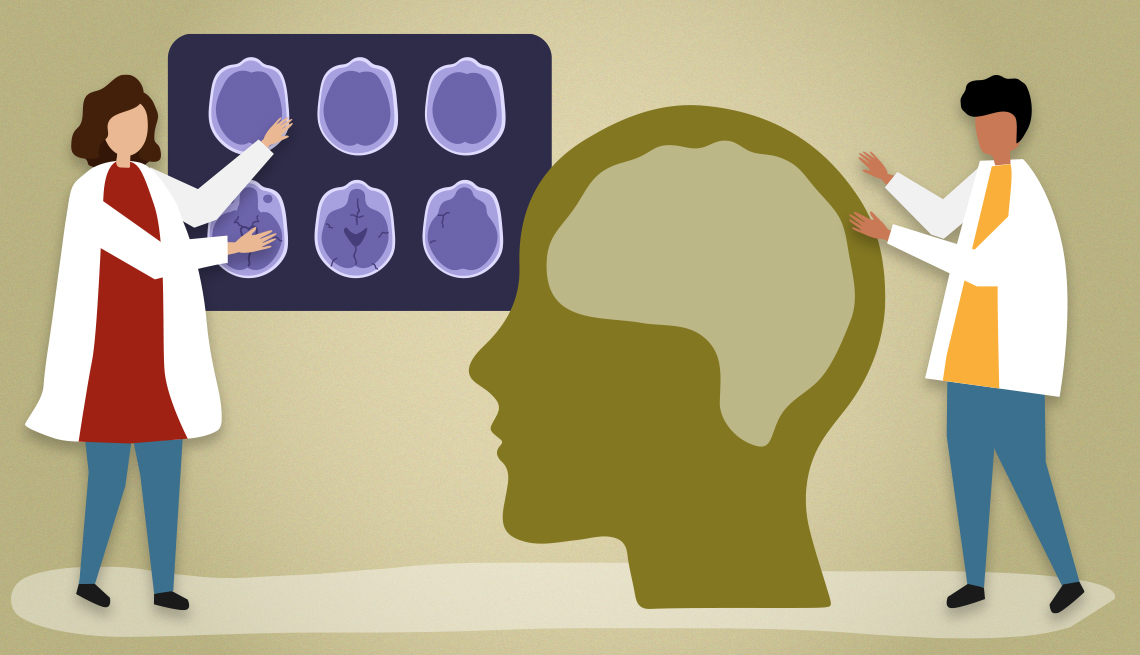
6 ways to get an accurate alzheimer's diagnosis
- Select a language for the TTS:
- UK English Female
- UK English Male
- US English Female
- US English Male
- Australian Female
- Australian Male
- Language selected: (auto detect) - EN
Play all audios:

6 STEPS TO TAKE FOR GETTING A DIAGNOSIS If you have concerns about a loved one with memory issues, experts say these six steps can help. 1. RECOGNIZE THE EARLY WARNING SIGNS OF
ALZHEIMER'S While some forgetfulness is normal as you get older, experts say an important warning sign of Alzheimer’s is if you notice that your loved one is having a hard time doing
things they used to enjoy. For example, if somebody always prepares breakfast for the family but now, “when they try to do it, it’s getting burned, it has too much salt or they forget the
recipe, that’s reason for concern,” Mora Pinzon says. Another warning sign: Behavior that is out of the ordinary — say your mom, who used to be very active, now stays in bed for much of the
day. Compared to their peers from other ethnic groups, Latino patients with early Alzheimer’s are more likely to report anxiety and depression, according to the latest research. They’re also
more likely to struggle with the activities of daily life, research shows. Check out AARP’s list of 10 warning signs of dementia you shouldn’t ignore and the Alzheimer’s Association’s 10
warning signs of Alzheimer’s. 2. START THE CONVERSATION If you’re worried about a family member, it’s important to voice your concerns in a supportive and loving way. Initiate the
conversation in a calm and quiet environment, suggests Monica Moreno, senior director for care and support for the Alzheimer’s Association. Start by sharing what you’ve noticed, and ask if
they have noticed changes too. “That can really open the lines of conversation,” Moreno says. “A lot of times they may have noticed the symptoms, but they’re afraid to bring it up.” Since
Alzheimer’s Association surveys show most Hispanics (57 percent) believe that significant memory loss is a normal part of aging, the conversation can include helping them understand that’s
not true. No matter how supportive you are, the conversation may trigger feelings of anger, fear, shame or failure — so don’t be surprised if you meet resistance. “As difficult as it is,
it’s not a sprint, it’s a marathon,” Moreno says. “You may have to have multiple conversations over time before the person agrees to go see a doctor.” For more tips on having this difficult
conversation, the Alzheimer’s Association offers 10 steps, in both English and Spanish, about how to approach memory concerns in others. 3. SEE A PRIMARY CARE DOCTOR Encourage your family
member to share their concerns with their primary care doctor, and offer to accompany them to the visit. “Remind them that it may not be Alzheimer’s or dementia — maybe it’s just a vitamin
deficiency,” suggests Mora Pinzon. A physician can do bloodwork and perform other tests to determine if something besides dementia is causing their memory problems. In addition to a vitamin
deficiency, possibilities include sleep apnea, an infection or the side effects of a medication. If the results of those tests are negative, some primary care doctors will initiate an
Alzheimer’s screening themselves. Others will refer you to a specialist. 4. FIND A SPECIALIST YOU ARE COMFORTABLE WITH Several types of doctors screen and diagnose patients for brain
disorders, including neurologists, psychiatrists, psychologists and geriatricians. Dementia diagnostic centers, Alzheimer’s Disease Centers or Alzheimer’s Disease Research Centers also do
the screenings and typically have more than one specialist on staff.
